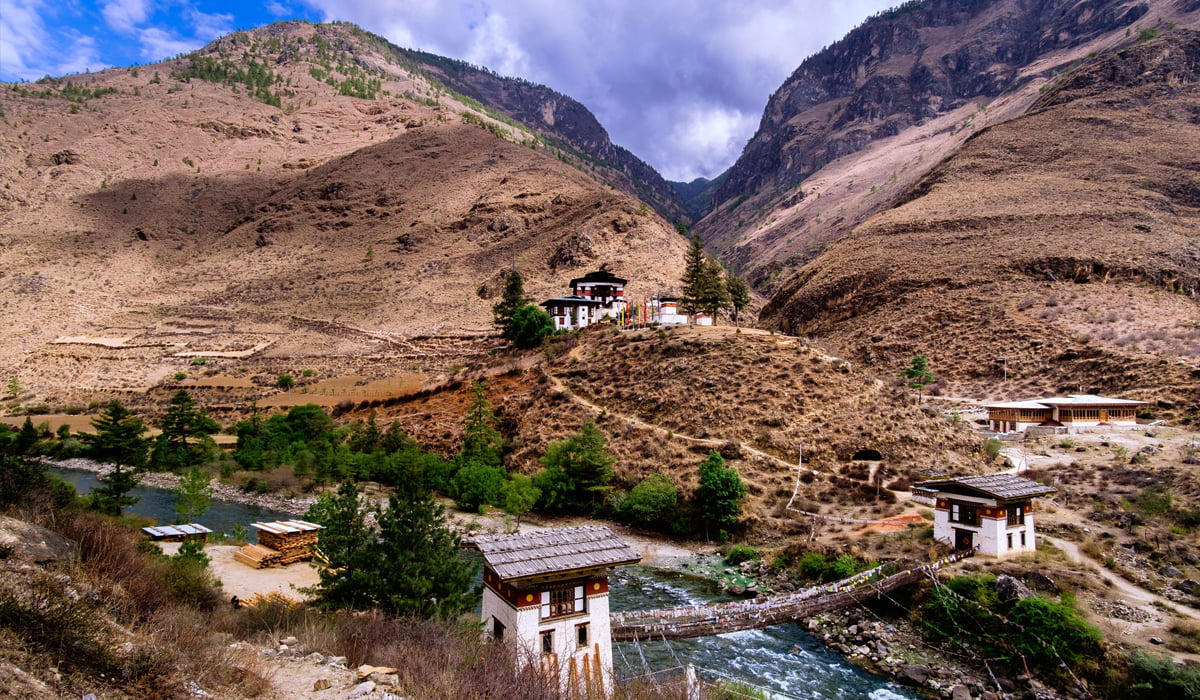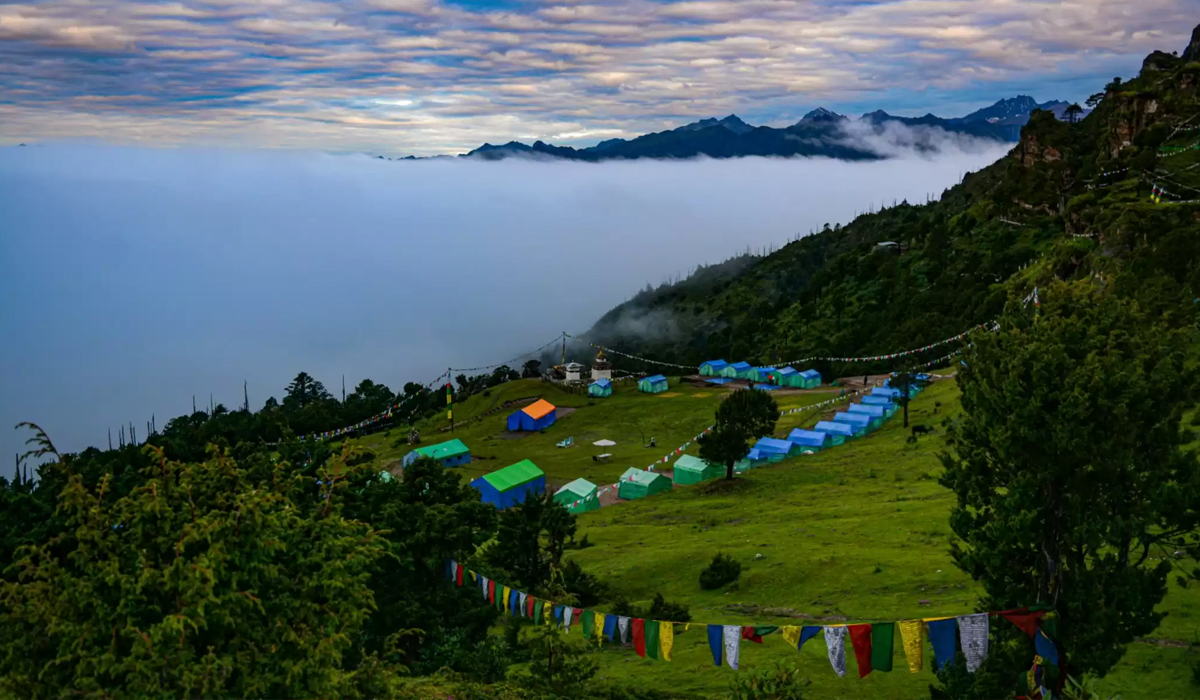


Kyichu Lhakhang: A Jewel of Bhutanese Spirituality
Kyichu Lhakhang, one of Bhutan’s oldest and most revered temples, is located in the serene Paro Valley. Steeped in history and spiritual significance, it remains a vital destination for pilgrims and visitors interested in Bhutan’s rich Buddhist heritage.
Historical Background
Built in the 7th century by Tibetan King Songtsen Gampo, Kyichu Lhakhang is one of 108 temples constructed to subdue a demoness that threatened the spread of Buddhism in the Himalayan region. According to legend, these temples were strategically placed to pin down the demoness and establish Buddhism. Kyichu Lhakhang represents the left foot of the demoness, while Jokhang Temple in Lhasa is considered her heart.
Over the centuries, the temple has been renovated and expanded. In the 8th century, Guru Rinpoche blessed Kyichu Lhakhang during his journey to Bhutan, further elevating its sanctity. In the 1960s, Her Majesty Queen Kesang Choden Wangchuck oversaw significant restorations, preserving its cultural and spiritual legacy.
Architectural Highlights
Kyichu Lhakhang is a quintessential example of traditional Bhutanese architecture. The temple complex features a golden-roofed main shrine housing an original statue of Jowo Sakyamuni Buddha, regarded as a replica of the statue in Lhasa’s Jokhang Temple.
The inner sanctum is adorned with murals depicting Buddhist deities and stories from sacred texts. The temple courtyard is surrounded by prayer wheels, while the exterior walls are covered with exquisite carvings and intricate designs. Nearby, an orange tree, believed to bear fruit throughout the year, adds a mystical charm to the site.
Spiritual Significance
Kyichu Lhakhang holds immense spiritual importance for Bhutanese people. It is considered a gateway for pilgrims to connect with Bhutan’s deep-rooted Buddhist beliefs. Devotees circumambulate the temple, spin prayer wheels, and offer prayers for blessings, good health, and prosperity.
The temple is closely linked to Guru Rinpoche, whose blessings are believed to resonate within its walls. The serene ambiance and sacred relics housed in the temple make it a spiritual haven for locals and visitors alike.
Scenic Beauty
Nestled amidst lush greenery and surrounded by the majestic Paro Valley, Kyichu Lhakhang offers a tranquil escape. The views of terraced fields, distant mountains, and the Pa Chhu River create a picturesque setting that enhances the spiritual experience.
Accessibility
Kyichu Lhakhang is easily accessible, located just a 10-minute drive from Paro town. The road leading to the temple is well-maintained, and its proximity to other attractions like Rinpung Dzong and Taktsang Monastery makes it a convenient addition to any itinerary.
Festivals and Rituals
The temple is a focal point for various religious ceremonies and rituals throughout the year. During auspicious occasions, monks and devotees gather to perform elaborate prayers and rituals, filling the air with the soothing sounds of chanting and the rhythmic beat of traditional instruments.
Preservation and Community Roles
Kyichu Lhakhang has undergone several renovations to preserve its historical and spiritual significance. Local communities actively participate in maintaining the temple, ensuring that its heritage is passed down to future generations. The temple also serves as a center for spiritual learning and cultural preservation.
Paro - Places to visit

Kyichu Lhakhang, one of Bhutan’s oldest temples, symbolizes Buddhism’s introduction, featuring beautiful architecture and serene surroundings in Paro Valley.

Drukgyal Dzong, a historic fortress in Paro, symbolizes Bhutanese resilience, offering breathtaking mountain views and insights into the nation’s heritage.

Tachogang Lhakhang, located in Paro, is a historic temple known for its stunning architecture and beautiful bridge, symbolizing Bhutanese heritage.

Dungtse Lhakhang, a unique chorten-style temple in Paro, features exquisite murals and offers insights into Bhutanese Buddhism and history.

Taktsang Monastery, or Tiger’s Nest, clings to a cliff in Paro, symbolizing Bhutan’s spirituality and breathtaking natural beauty.

Chelela Pass, the highest road pass in Bhutan, offers stunning views, vibrant flowers, and a scenic route to Paro and Haa.

Chelela Ridge Trek offers breathtaking views of the Himalayas, vibrant flora, and a rich cultural experience in Bhutan’s scenic landscapes.

Bumdrak Trek offers stunning views of the Himalayas, serene monasteries, and unique cultural experiences, making it a memorable adventure in Bhutan.

Dzongdrakha Monastery, perched on a cliff in Paro, features stunning architecture and serene surroundings, offering insights into Bhutanese Buddhism.

Paro Taa Dzong, a historic fortress, houses the National Museum of Bhutan, showcasing the country’s rich cultural heritage and art.

Paro Rinpung Dzong, a stunning fortress-monastery, features exquisite Bhutanese architecture and serves as an administrative center and religious site.
